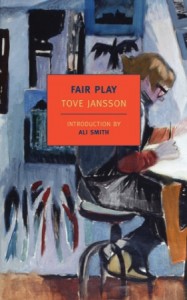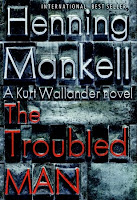 Henning Mankell writes gripping, engaging novels and, for the most part, I’ve enjoyed every one of his books that I’ve read. And there were aspects to The Man from Beijing that I enjoyed but overall it really wasn’t as successful as many of his other novels. It’s a stand alone, so not a Kurt Wallander mystery, and it’s full of fascinating details about China, early development of the railroad in the US, the migrant/slave workers and colonization.
Henning Mankell writes gripping, engaging novels and, for the most part, I’ve enjoyed every one of his books that I’ve read. And there were aspects to The Man from Beijing that I enjoyed but overall it really wasn’t as successful as many of his other novels. It’s a stand alone, so not a Kurt Wallander mystery, and it’s full of fascinating details about China, early development of the railroad in the US, the migrant/slave workers and colonization.
The novel opens with a lone wolf tracking the scent of blood, human. A man lies dead in a remote village in Sweden. In fact, the entire small hamlet, with few exceptions, is brutally murdered. And there is no apparent motive for the crime, no reason an entire village should be brutally slayed — the likes of which have never truly been seen in Sweden before. The police can find no motive and the only link seems to be the fact that all of these people lived in the small, remote village.
When Swedish judge Birgitta Roslin hears about the killings in Hesjovallen, she realizes that she has a connection to the victims. Her mother’s foster parents lived in the hamlet, and her mother grew up one of the houses where the massacre took place. In a way, she’s somewhat related to the people who were murdered, and Roslin discovers that they were all relatives of the Andren family…and soon suspects that something much larger is going on than a madman gone wild with a machete. Although, as you plod (and I mean plod) through the complex backstory, you discover why it’s so much easier for the police to arrest their suspected madmen than to believe what actually happened, and why.
Partway through the mystery, Mankell digresses into a narrative that follows the story of a young Chinese man in 1863. As he and his two brothers make their way to Canton, poor, starving, looking for work and food, they are confronted with the harsh reality of life. San, the protagonist, and Guo Si and Wu, are forced from their village and sent to wander. Like so many, they end up in a crowded city hoping to find a new life. They come upon tragedy after tragedy, and eventually San and Guo Si are captured, stolen and forced to become slaves building the railroad in the US. It’s an impossibly hard life and as the novel progresses you understand the true toll progress takes in human life. In the end, San finds his way back home, but not before horrible things happen, things that would make a weaker man question whether or not he was cursed. How does all of this fit in to the massacres? Well, it would spoil the novel too much to truly explain, but let’s just say that some of the things that happen while San is working on the railroad are avenged years later by one of his descendants.
Eventually, Roslin figures out there’s a link to the murders with China and sets off to uncover exactly what happened. It’s a dangerous thing to do, and she’s really not aware of the kind of trouble she’s stepping in. I enjoyed Roslin’s character — she’s tough as nails, smart, and doesn’t stand for any messing about. But I’ve always had a problem with revenge plots. I think they are the weakest in terms of thrillers — I don’t like them in movies and I’m even less fond of them in novels, which is why this book sort of fell flat for me. It’s not a page-turner, and at 2 AM when you’ve got a RRBB feeding away, you need something active, and fascinating, to peak your interest. That’s not to say that the novel isn’t well researched and that the information contained within isn’t valuable, I’m just saying it didn’t all fit together as nicely as one would have expected from a novelist as solid as Mankell.
In the end, the parts of the book that I liked the best were the ones where Birgitta was out and about trying to solve the mystery. I doubt that Mankell will develop a series around the character but I do have to admit that I really, really liked her and wanted more from her in the novel. The far fetched nature of the entire book just didn’t ring true despite Mankell’s excellent prose and I was disappointed in the bad guy. He seemed very Hollywood, a little too Gordon Gecko for my liking, but I did learn a lot about China, or at least Mankell’s version of China, and the very interesting political things that are happening these days — in that sense, the novel doesn’t disappoint.
And, because Mankell’s Swedish, here’s another book that counts for my Around the World in 52 Books challenge. One day I’ll tally everything up. I’ve got four weeks left in the year. Maybe I’ll get caught up on all of my reading challenges. Um, yeah, right.
 There are so many things I am thankful for when it comes to my Vicious Circle book club. The ladies are amazing, intelligent and actually love to discuss books. But they are also so well read that it’s crazy — I am consistently in awe of all of the books, and authors, my friends (and I feel privledged to call these women friends) know. Before the Vicious Circle, I had never heard of Tove Jansson. After book club, I can’t imagine my life without her.
There are so many things I am thankful for when it comes to my Vicious Circle book club. The ladies are amazing, intelligent and actually love to discuss books. But they are also so well read that it’s crazy — I am consistently in awe of all of the books, and authors, my friends (and I feel privledged to call these women friends) know. Before the Vicious Circle, I had never heard of Tove Jansson. After book club, I can’t imagine my life without her.

